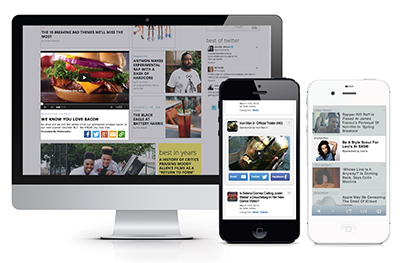 79% of magazine publishers expect their native ad revenue to grow this year; are they paying enough attention to the possible pitfalls?
79% of magazine publishers expect their native ad revenue to grow this year; are they paying enough attention to the possible pitfalls?
Native advertising has become – for better or for worse – a reality in the bottom line of magazine media brands, with 79% of publishers surveyed expecting to grow their native ad revenues this year. Now, recent research from FIPP and the Native Advertising Institute attempts to understand this.
“The growing importance of native advertising and the opportunities, challenges and threats it generates for the magazine media industry is creating a wide-ranging debate,” explains Chris Llewellyn, president and CEO of FIPP in an article in BizCommunity.
“It is important, therefore, to get more facts and data than emotion and opinion into the argument and that is why FIPP has joined with the Native Advertising Institute to establish benchmarks and trends with the first Native Advertising Trends Report.”
Much of the debate Llewellyn mentions centers around a few hot button topics we’ve written about before: native ads and the reader experience, risks to brand integrity, and the disappearing line between editorial and business interests.
As more publishers offer native advertising opportunities (52% already do, with another 37% planning to add it soon, notes the report), most of them seem willing to overlook the potential downside. In fact, they expect that by 2018 an average of 33% of their revenue will come from sponsored content.
They clearly feel that native advertising adds value to their advertisers (92% said yes), and 90% said that it’s “important” or “very important” to their company. Yet 28% of those same respondents feel either “neutral or “negative” about the practice and more than one in four could not say definitely that native ads add value to the reader experience.
Not surprisingly, the fact that their team has solid editorial experience makes the idea appealing from a business standpoint; putting together editorial content is what they do, and multi-platform storytelling is a big strength in this industry. Still, 45% see “lack of separation of the editorial and the commercial side” as a threat, while 41% believe that “poor client understanding” is also a big problem and 29% have concerns about misleading labeling.
“Given the concerns about the division between church and state it is quite a surprising fact that such a big percentage of the publishers involve their editorial staff in the production of native advertising,” notes the report.
The good news is that they are, to a large extent, aware of the problems inherent in native ads. Still, it seems that money talks and the temptation is just too great. Native advertising is seen as a “premium product” and it’s priced accordingly, with 59% saying they charge more for native ads than traditional.
“Producing customized content for a specific media property is where the high margins lie,” notes the report, with programmatic offerings becoming much less important for publishers. All things considered, this looks to be a watershed year for native advertising.
